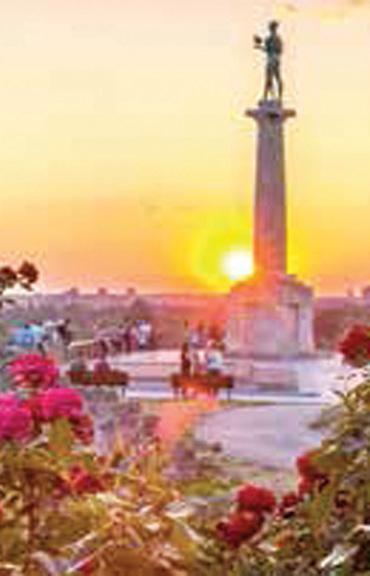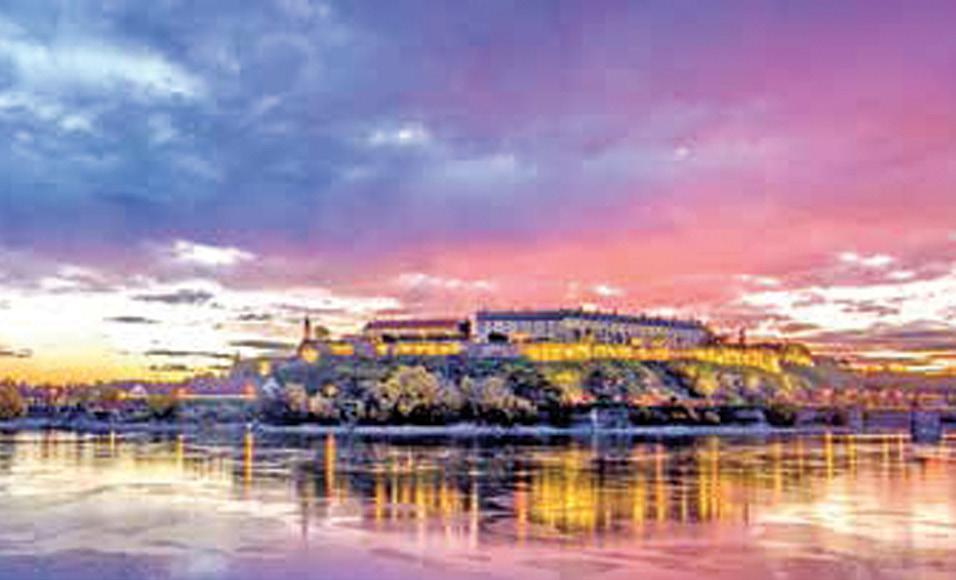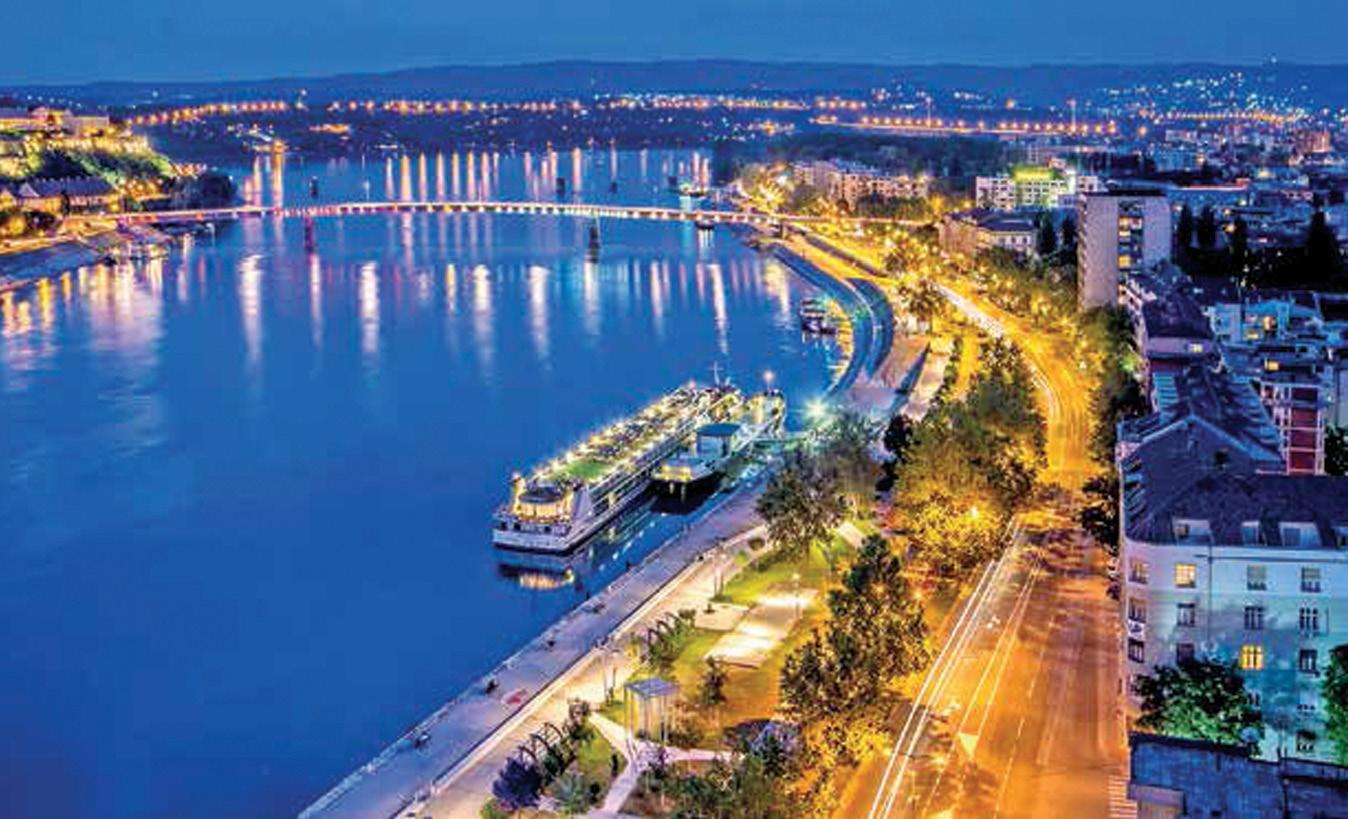
3 minute read
The a dven T ureS oF The SpiriT
Serbia is a country with authentic cultural heritage. Hereby, we would like to present to you a part of the abundant cultural heritage we have inherited and are passing it on to new generations, through several cultural and historical entities that we have chosen – Belgrade, Novi Sad and Subotica corporaT e
Belgrade lives life to the fullest, it is the hub for all happenings, and is always interesting. The city's cultural spirit permeates everything - from museums, galleries and theatres to film and music festivals. The peaceful and sublime atmosphere of a museum can easily turn into a true spectacle. From prehistoric sculptures to helmets of Roman legions or medieval icons; from the handicrafts of the typical Serbian household to the royal crown and the insignia of the Serbian royal dynasties, in Belgrade's museums - the National Museum, the Museum of Contemporary Art Belgrade, the Museum of Jugoslavija, the Nikola Tesla Museum - you will experience a cultural, social and political adventure. There are very few cities that are synonymous with one name, and there aren't many celebrated and famous people who can identify themselves with just one place.
Advertisement
Art galleries have also left an indelible mark on a city's cultural identity - the Fresco Gallery, Art Gallery of the Cultural Centre of Belgrade, the Prozor Gallery, the Singidunum Gallery – to mention just a few. Classical music is a significant part of cultural heritage.
The Belgrade Philharmonic Orchestra is today the leading orchestra in the region and a breath of fresh air on the international concert scene. The Great Hall of the Ilija M. Kolarac Foundation is one of the most representative music concert ven ues in Serbia with 300 music programmes taking place there all year around. The Belgrade Music Festival (BEMUS) is one of the most recog- because of its leisurely and relaxed ifestyle, the city of novi Sad, where 20 different nationalities live in harmony, was included in the „Top 10 cities to visit in 2019“ list by lonely planet, ranking in third place nizable classical music festivals in Southeast Europe, which has been held for 50 years. Belgrade also pays a lot of attention to contemporary music production and musical stage performances, which often strive for alternative artistic results. Since its establishment in 1971, the International Film Festival, FEST has always been a prestigious event. The Festival welcomes films and filmmakers from around the world, even those films that are not screened at cinemas. Belgrade International Theatre Festival (BITEF) is one of the oldest, most important, most prominent and rarest festivals in the family of the global theatre festivals. This year, it will be held for the 53rd time and is a must-see event in Belgrade. www.tob.rs
Visit noVi sad, a city that proudly carries tWo european titles
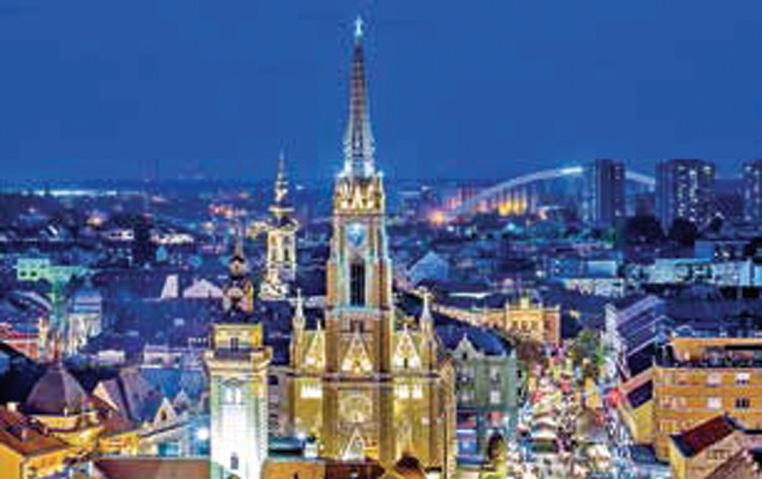
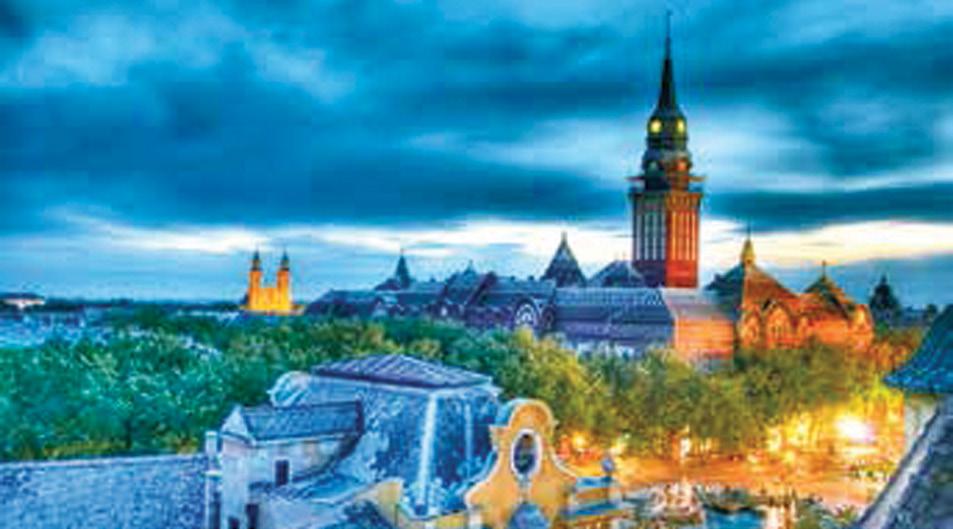
For three centuries, which is how long it has been called Novi Sad / Vididek / Neusatz, this city has been the hub of diverse and abundant cultural heritage of many nationalities living in it. Novi Sad was declared the Youth Capital of Europe in 2019 and the European Capital of Culture in 2021. With the amazing views from Petrovaradin Fortress, numerous galleries and ateliers, and the beautiful old town centre, this is one of the must-see destinations in Serbia. Petrovaradin Fortress is a real masterpiece of baroque military architecture. It was built in the 17th and 18th century and is a cultural and historical monument. The Fortress is home to the Museum of the City of Novi Sad, Academy of Arts, Art Circle, Planetarium and the City Archives. 16km-long underground military galleries, spanning four levels, represent the biggest tourist attraction of the Fortress. Because of its leisurely and relaxed lifestyle, the city, where 20 different nationalities live in harmony, was included in the „Top 10 Cities to Visit in 2019“ list by Lonely Planet, ranking in third place.
www.novisad.travel subotica , a secession G em Subotica, the northernmost city in Vojvodina, a multiethnic environment, and the epicentre of secession, provides numerous opportunities for a meaningful holiday. The strong desire of the citizens of Subotica and the great inspiration of builders, artists and craftsmen have resulted in many Secession style buildings built in Subotica, which even after a whole century, remain equally beautiful, attractive and intriguing - the City Hall, the Synagogue, the Raichle Palace, and various banks. Subotica is also known for its relaxed atmosphere, good food and quality wines from the sandy wineyards. By all means, visit the Palić Lake, which is in the close proximity to Subotica, where you can see the Water Tower, Big Terrace, Women's Beach, Music Pavilion and memorial fountains painted in the shade of red that is so characteristic of Palić, which all exude the spirit of secession. Make sure to visit the Palić Lake, granges and wineries nearby. www.visitsubotica.rs www.srbija.travel
